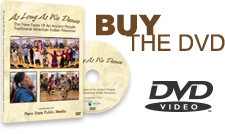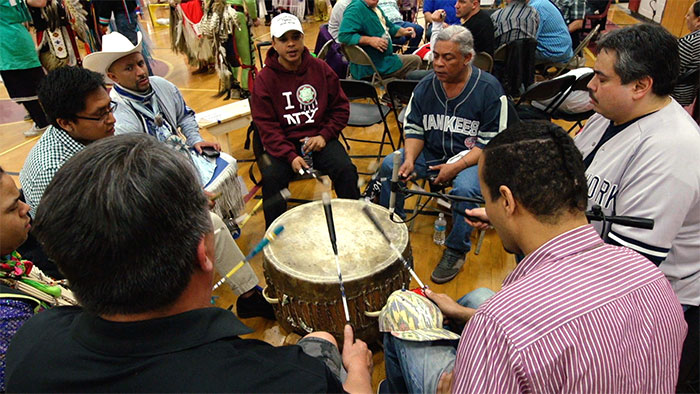Penn State Public Media - As Long As We Dance: The New Faces of an Ancient People Traditional American Indian Powwow
 mediasales.psu.edu
mediasales.psu.edu
Press Inquiries
Matt Caracappa
mnc5000@psu.edu
Program Information
Cheraine Stanford Producer/Director
cps13@psu.edu
814-867-1390

The Traditional Drum
The drumbeat is the heartbeat of Mother Earth and of Native Peoples’ way of life. The traditional drum is a highly respected ancient and sacred instrument. Traditional drums have no steel on them and are covered with deer, elk, moose or buffalo hide. There are usually at least four singers on the drum, giving testimony to the four directions. The drum is never left unattended. Nothing is ever set on the drum, nor is anyone allowed to reach across the drum. The drum carrier and singers have spent many years learning the tradition and the songs. Some songs are very old, and have been passed down from generation to generation. Some songs are contemporary. At times during a song, there will be honor beats. These are louder beats in a slower tempo, and are done out of respect for the drum. There are two styles of drums: Northern and Southern. Northern drums sing in a higher pitch and have a longer set of four to eight honor beats. Southern Drums sing in a lower pitch and quicker pace with a distinctive set of three honor beats. Dancers acknowledge the honor beats according to their dance style. There are many songs and dances in American Indian cultures. Some songs have words, (honor songs, for instance); others have “vocables,†a melody to dance to. Many are strictly traditional and are danced to in traditional fashion; some are contemporary and are danced to in more recent fashion.